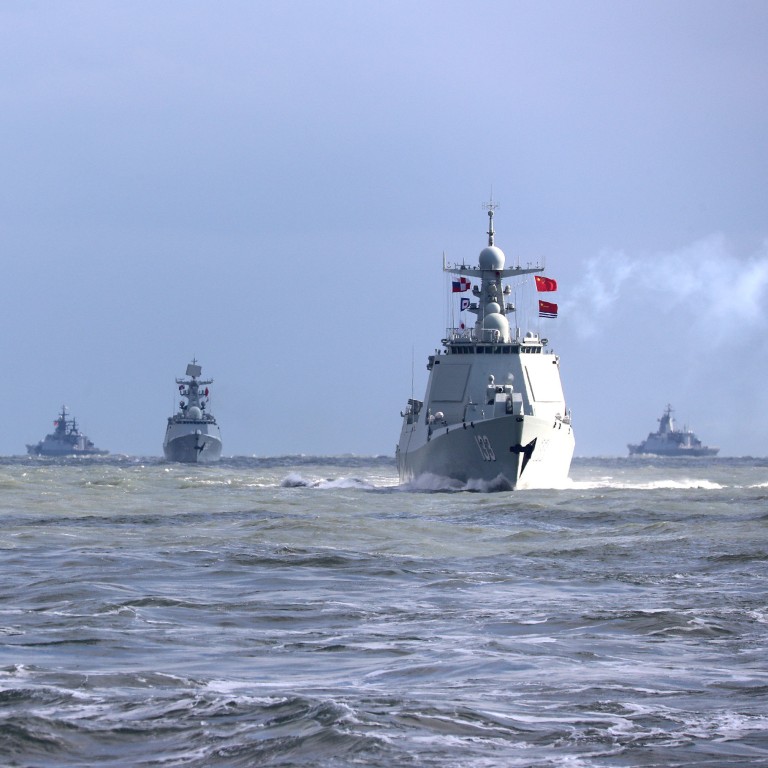In a planned strategic drill near Japan, the Russian Navy’s Pacific Fleet demonstrated its capabilities by successfully foiling an air attack posed by a simulated adversary.
While the specifics of the hypothetical enemy were not disclosed, it can be safely speculated that the scenario was crafted with the United States and its allied forces in mind.
The Pacific Fleet’s detachment, composed of the flagship Guards Order of Nakhimov, the missile cruiser Varyag, and the frigate Marshal Shaposhnikov, played a pivotal role in the exercise.
The Eastern Military District press service announced that the detachment engaged in an exercise designed to repel an air attack in the East China Sea.
During the drill, the crews of the warships showcased their expertise by detecting several simulated air targets approaching the fleet.
The missile cruiser and frigate promptly activated electronic warfare equipment and employed a combination of active and passive interference to disrupt potential threats.

In a carefully coordinated response, the ship’s crew tracked the simulated enemy aircraft before neutralizing them within the designated kill zone.
“When mock enemy aircraft entered the target zone, the Guards Order of Nakhimov Varyag missile cruiser and the Marshal Shaposhnikov frigate destroyed air targets with anti-aircraft missile systems,” said the Eastern Military District.
The simulated air attack was executed electronically, and no live firing of the anti-aircraft missile system took place during the exercise.
“The exercises were conducted following the plan of activities of a detachment of warships of the Pacific Fleet in the Asia-Pacific region,” stated the Eastern Military District press service.
Nonetheless, this naval detachment of the Russian Navy’s Pacific Fleet departed Vladivostok on January 22 for sea operations.
It was then announced that the ships would carry out various tasks, including assignments in the Asia-Pacific region and visiting foreign ports for diplomatic engagements. Nevertheless, the specific duration of their mission was not disclosed.
Russia, China Strengthen Military Collaboration
The successful execution of this drill underscores the Russian Navy’s growing presence in an increasingly tense western Pacific.
The East China Sea, where these maneuvers took place, has been a focal point of apprehension for the United States and its allies, particularly Japan.
Entangled in territorial disputes with Beijing over the Senkaku Islands (known as the Diaoyu Islands in China), Tokyo closely monitors activities in this region.
Additionally, Japan expresses unease regarding the region’s deepening collaboration between Moscow and Beijing. In December 2022, China and Russia conducted a weeklong joint live-fire naval exercise in the East China Sea, signaling the deepening of their partnership.
The strengthened ties between Moscow and Beijing have evolved against strained relations between Russia and Western governments due to the protracted conflict in Ukraine.

While China refrains from outright condemning Russia’s attack on Ukraine, it has increased economic assistance to its neighbor, fostering record levels of bilateral trade amid Western sanctions.
Simultaneously, Japan is bolstering its defense budget and acquiring long-range weapons, citing heightened threats to its security environment, including China and Russia.
Recent joint air exercises near Japanese airspace and the circumnavigation of the Japanese main islands by a joint Chinese-Russian flotilla in 2021 underscore the increasing collaboration around Japan.
Given these developments, experts assert that the risk of confrontation between the United States and China in the East China Sea is rising.
While risk-mitigation measures are more developed in the South China Sea, where protocols prevent unsafe encounters at sea or in the air, the exact mechanisms between China and Japan in the East China Sea are lacking.
The potential triggers for a US-China conflict in these regions include a clash involving a US ally or a Chinese attempt to restrict access to aircraft or vessels adhering to customary international law.
The other plausible scenario, presenting the most immediate risk, involves an incident that triggers US alliance commitments. In maritime disputes involving China, the United States has alliance relationships with key claimants, particularly the Philippines and Japan.
China perceives the increasing collaboration between the United States and countries such as the Philippines, South Korea, and Japan as potentially threatening its sovereignty.
In response, Beijing views enhancing its partnership with Moscow as a strategic move to bolster its presence and act as a deterrent against perceived US interference.
- Contact the author at ashishmichel(at)gmail.com
- Follow EurAsian Times on Google News




